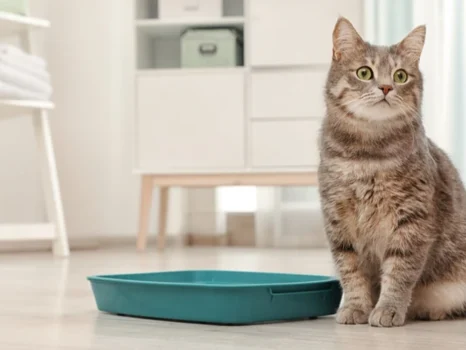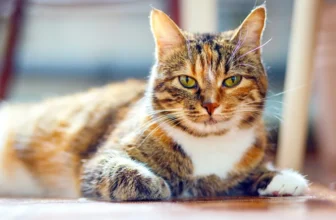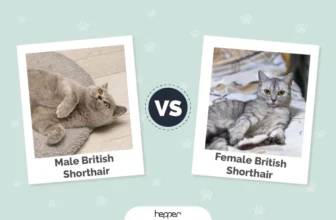As a pet owner, you know just how important it is to have a happy and healthy animal. One crucial aspect of feline care is litter box training. If you own an American Shorthair, you may be wondering how litter box training plays a role in their overall behavior and well-being. This breed is known for their playful and affectionate personalities, but like all pets, they require proper training and care. In this article, we’ll explore the link between litter box training and your American Shorthair’s behavior, including its importance, effective training tips, common issues, and other factors affecting their behavior. So, let’s dive in and ensure your furry friend is living their best life!
The Importance of Litter Box Training
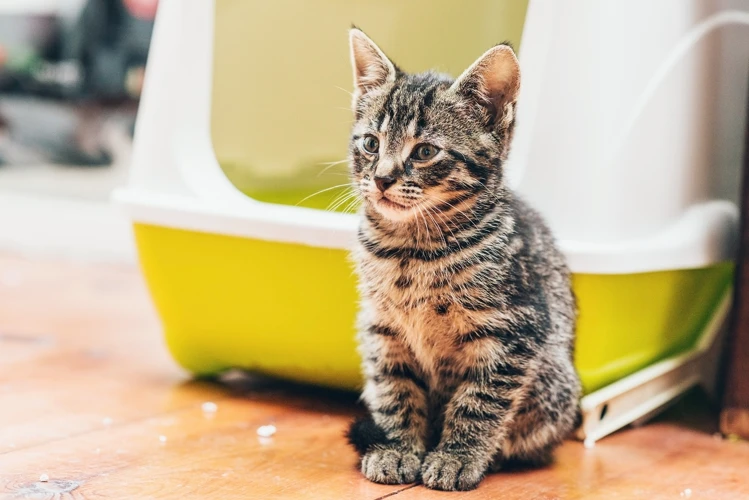
Litter box training is an essential part of owning an American Shorthair cat. As a responsible owner, it’s important to understand the reasons why litter box training is crucial to your cat’s overall behavior and health. In this section, we will highlight the importance of litter box training and provide tips to help you effectively train your American Shorthair. Additionally, we will discuss some common issues that may arise during litter box training and how to overcome them. If you want to learn more about litter box training, check out our article about training your American Shorthair to use a litter box.
Prevents Behavioral Issues
One of the primary reasons for litter box training your American Shorthair is to prevent potential behavioral issues. Not using a litter box can lead to various behavioral problems such as aggression, anxiety, and depression. These problems can be avoided by ensuring that your American Shorthair is comfortable using the litter box and making it an integral part of their daily routine.
Proper litter box training provides your American Shorthair with a sense of security and comfort. When a cat can’t find a place to relieve themselves, it can cause them to become anxious and agitated. This anxiety can then lead to unwanted scratching, urine spraying, and other destructive behaviors.
Litter box training provides an outlet for natural instincts. Cats are naturally clean animals with the instinct to bury their waste. Without a designated area for elimination, your American Shorthair might begin to eliminate in areas of the home that they deem appropriate. Consistent litter box use will also help prevent messes from happening throughout the home.
If your American Shorthair does not have access to a litter box, they may develop health problems affecting their behavior. Some of these problems include urinary tract infections or blockages, which can be especially dangerous for male cats. Litter box training also helps detect any underlying health issues early on, as a change in elimination behavior is often one of the first signs of a problem.
To ensure your American Shorthair does not experience any negative behaviors due to incorrect litter box usage, it is important to choose the right type of litter box, litter, and location for the litter box. Read our guide on avoiding litter box mistakes to ensure your American Shorthair is set up for success.
Provides an Outlet for Natural Instincts
American Shorthairs are naturally clean and tidy animals, and litter box training not only ensures that your home remains clean and odor-free, but also provides an outlet for their natural instincts. These cats are known for their love of cleanliness, and providing them with a designated area for eliminating waste satisfies their instinctual need to keep their environment clean.
By maintaining a clean litter box, you are providing your American Shorthair with a sense of security, comfort and control over their environment. This is especially important for indoor cats, who lack the freedom to come and go as they please and may feel more vulnerable to environmental stressors. A consistent routine of litter box use and upkeep can help avoid behavioral issues such as anxiety, depression and aggression that can stem from an unstable home environment.
To enhance this natural instinct, make sure you are choosing the right type of litter for your American Shorthair. Some cats are sensitive to strong odors and may refuse to use litter boxes that contain strong-smelling litter. Consider using unscented, low-dust litter to avoid any respiratory or sensory issues. Additionally, choose a litter box that is spacious enough for your cat, to ensure they have enough room to move around and dig to their heart’s content.
To further support your cat’s natural instincts, place the litter box in an area that is easily accessible and private. Consider locating it in a quiet, out-of-the-way area where your American Shorthair feels safe and secure.
Finally, make sure to clean the litter box regularly to avoid any unpleasant odors and to provide a clean and inviting environment for your cat. This can also help avoid potential health issues and behavioral problems that may arise from an unclean litter box. For more information on cleaning your litter box, check out our article on cleaning your litter box with an American Shorthair.
By providing your American Shorthair with an outlet for their natural instincts, you can help them feel comfortable and at home in their environment. A properly trained and well-cared-for cat can lead to a healthy, happy, and well-behaved pet.
Reduces Stress and Anxiety
Proper litter box training of your American Shorthair cat not only prevents behavioral issues, but also helps in promoting good mental health by reducing stress and anxiety. Unattended litter boxes and improper training techniques can lead to unsanitary conditions and stress for your feline friend.
Studies have shown that cats can experience stress and anxiety when their litter box is not attended to properly. This can result in avoiding the litter box, which leads to accidents in other areas of the house. To avoid such circumstances, it is important to choose the right litter box and litter type for your American Shorthair cat.
Below is a table listing some of the factors that can cause stress and anxiety in cats along with their possible solutions:
| Factors causing Stress and Anxiety | Solutions |
|---|---|
| Litter box location in a noisy or high-traffic area | Place the litter box in a quiet and peaceful area of the house |
| Dirty litter box | Clean the litter box on a regular basis to ensure it is sanitary and odor-free |
| Wrong litter type | Choose a litter type that your cat is comfortable with |
| Not enough litter boxes | Place multiple litter boxes throughout the house, particularly for multi-cat households |
To prevent stress and anxiety, it is important to have a regular litter box cleaning schedule. When litter box training, slowly introduce your American Shorthair kitten to the litter box. Start by placing your kitten in the litter box and digging its paws into the litter to give it an idea of what it’s for.
To learn more about effective litter box training for your American Shorthair cat, check out our article on litter box training for American Shorthair kittens. Additionally, to ensure that you are using the best litter box options for your American Shorthair cat, read our article on best litter box options for American Shorthairs and our guide on litter box troubleshooting for Shorthairs.
Prevents Health Issues
Proper litter box training not only prevents behavioral issues, but it can also prevent health issues in American Shorthair cats. Here are some health problems that poorly trained or improperly cared for litter boxes can cause:
- Urinary Tract Infections: If the litter box is not cleaned regularly, harmful bacteria can grow and cause urinary tract infections in your American Shorthair. If the litter box is too small or has sharp edges, it can cause your cat discomfort while using it and make them more prone to developing infections.
- Constipation: A dirty litter box can discourage your cat from using it, leading to constipation. When your cat is constipated, they may strain too hard and develop painful and dangerous health conditions, such as a rectal prolapse.
- Allergies: Dusty or perfumed litter can cause respiratory allergies in your American Shorthair, leading to coughing, sneezing, and runny nose. Some cats may also develop skin allergies if they come into contact with certain types of litter.
- Behavioral issues: An unclean or uncomfortable litter box can also cause your American Shorthair to avoid using it, leading to inappropriate elimination behavior outside the box, which can lead to bigger health issues.
It’s important to keep your cat’s litter box clean, comfortable, and in a safe location to prevent these health problems. By doing so, you can ensure a healthy and happy life for your American Shorthair.
Tips for Effective Litter Box Training
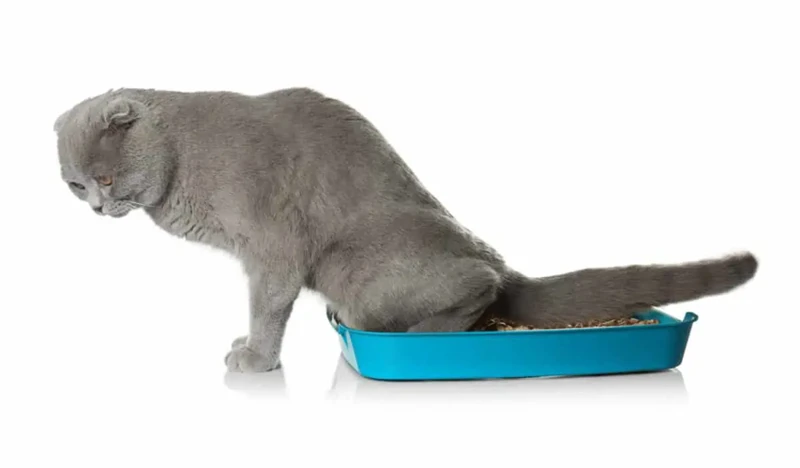
When it comes to litter box training, pet owners often find themselves feeling overwhelmed and unsure of where to start. It’s a crucial aspect of pet ownership, as it can have a significant impact on your American Shorthair’s overall behavior. Fortunately, there are several tips and techniques you can use to make the process smoother and more effective for both you and your feline friend. From selecting the right litter box and location to using positive reinforcement training, here are some essential tips to keep in mind for successful litter box training.
Choosing the Right Litter Box
When it comes to litter box training, choosing the right litter box is crucial for your American Shorthair’s overall behavior. Here are some considerations to keep in mind:
| Factor | Consideration |
|---|---|
| Size | Make sure the litter box is big enough for your American Shorthair, as they prefer a spacious area to eliminate. Ideally, the box should be at least one and a half times the length of your cat. |
| Number of cats | If you have more than one cat, it’s important to have multiple litter boxes to prevent territorial issues. The rule of thumb is to have one box per cat, plus an extra one. |
| Accessibility | The litter box should be easily accessible for your cat, especially if they are older or have mobility issues. Consider getting a litter box with a low entryway or getting a ramp or stairs. |
| Covered vs. uncovered | Some cats prefer a covered litter box for privacy, while others prefer an uncovered one for better ventilation. Observe your American Shorthair’s behavior to determine which one they prefer. |
| Cleaning and maintenance | Choose a litter box that is easy to clean and maintain, as this will help keep odor and bacteria at bay. A litter box with a removable lid or a self-cleaning litter box may be good options. |
By considering these factors, you can choose the right litter box for your American Shorthair and ensure that they are comfortable and happy with their elimination habits.
Choosing the Right Type of Litter
When it comes to litter box training, choosing the right type of litter is crucial for your American Shorthair cat’s comfort and well-being. Here are some factors to consider when selecting the right type of litter:
| Factor to Consider | Explanation |
|---|---|
| Absorption | Choose a litter that can absorb urine and solid waste effectively to prevent odor and the growth of harmful bacteria. |
| Dust Level | Your American Shorthair’s respiratory system may be sensitive to dusty litter. Opt for a low-dust or dust-free variety. |
| Scent | Cats have sensitive noses and may be put off by strong scents. Choose an unscented or lightly scented litter. |
| Texture | Your cat may prefer a certain type of texture for their litter. Experiment with different textures such as sand-like, pellet-like, and crystal-like. |
| Clumping Ability | A litter that clumps together when soiled can make it easier to clean the litter box. However, avoid clumping litters that contain clay as it can be harmful if ingested. |
| Environmental Impact | Consider choosing a biodegradable or eco-friendly litter to reduce your carbon footprint and minimize landfill waste. |
It’s important to note that cats can be picky when it comes to their litter, so it may take some trial and error to find the right type that your American Shorthair prefers. Once you find the right one, stick with it to avoid any disruptions in their litter box training routine.
Choosing the Right Location
When it comes to choosing the right location for your American Shorthair’s litter box, there are a few things to consider. The goal is to find a location that is accessible, private, and comfortable for your cat to use.
Accessibility: A litter box should be easy for your cat to access. Make sure it’s on the same floor that your cat spends the majority of their time on. Avoid placing the litter box in a room that your cat rarely frequents, such as a basement or storage area.
Privacy: Cats prefer to use the litter box in a private location. Avoid placing the litter box in a high-traffic area or near a noisy appliance that could startle your cat. Instead, choose a quiet location that is sheltered from view.
Comfort: Your American Shorthair should feel comfortable in their litter box location. Avoid placing the litter box in a cramped space or next to a heat source like a radiator. Make sure there’s enough space for your cat to turn around and move comfortably.
Consider placing the litter box in a spare bathroom or laundry room. These areas often provide the privacy and accessibility your cat needs. Avoid placing your cat’s litter box near their feeding area or in a spot where they sleep, as cats prefer to have separate areas for different activities.
It’s important to note that some cats may have preferences for specific locations. Pay attention to your cat’s behavior and adjust the location of the litter box if necessary.
| Factors to Consider | Advice for Choosing a Location |
|---|---|
| Accessibility | Place litter box on same floor as cat frequents |
| Privacy | Avoid high-traffic areas and noisy appliances; choose a quiet location |
| Comfort | Choose a location with enough space for cat to move comfortably; avoid cramped spaces and heat sources |
By keeping these factors in mind and being attentive to your American Shorthair’s needs, you can choose a litter box location that will encourage regular use and prevent litter box aversion.
Training Techniques
When it comes to litter box training your American Shorthair, there are several techniques you can utilize. Here are a few effective training techniques to consider:
- Positive Reinforcement: One of the most popular and effective training techniques is positive reinforcement. This involves rewarding your cat for good behavior, such as using the litter box. You can use treats, praise, or playtime as a reward. When your cat exhibits negative behavior, such as eliminating outside the litter box, never punish or scold them, as this will only create fear and anxiety.
- Consistency: Consistency is key when it comes to training your American Shorthair. Choose a specific spot for the litter box and try to keep it in the same location. Make sure to use the same type of litter and maintain a regular cleaning schedule. This will help your cat learn and adapt to the new routine.
- Patience: Training can take time and patience, and this is especially true when it comes to litter box training. Some cats may take longer to adjust to using the litter box than others. Be patient and give your cat time to understand and learn the new behavior.
- Clicker Training: Another technique you can use is clicker training. This involves using a clicker to signal positive behavior and reward your cat when they exhibit good behavior, such as using the litter box. This technique can be effective, but it does require some training and understanding on your part.
- Crate Training: In some cases, crate training can be an effective technique to train your cat to use the litter box. This involves gradually introducing your cat to a crate or small confined space with their litter box. Over time, your cat will associate the crate with elimination behavior and will feel more comfortable using the litter box inside.
Remember, every cat is different, so it is important to find the technique that works best for your American Shorthair. With patience, consistency, and positive reinforcement, you can successfully train your cat to use the litter box and prevent any behavior issues that may arise from poor elimination habits.
Common Litter Box Training Issues and Solutions
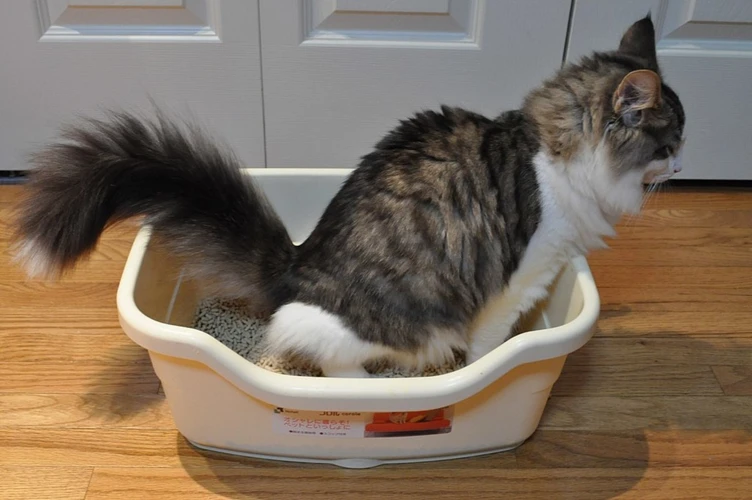
Training your American Shorthair to use the litter box can sometimes be a challenging task. It’s common for cat owners to encounter certain issues during the litter box training process. These issues can range from your cat eliminating outside the litter box to dealing with foul odors. It’s important to understand these common issues and their underlying causes in order to effectively address and solve them. In this section, we’ll take a look at some common litter box training issues and provide practical solutions to help you and your cat overcome them.
Avoiding Accidents Outside the Litter Box
Accidents outside the litter box can be a frustrating and messy issue, but there are several steps you can take to prevent them. Here are some tips to avoid these unpleasant incidents:
| Tip | Description |
|---|---|
| Choose the right size litter box | Make sure your American Shorthair has enough space to turn around and move comfortably. If the litter box is too small, your cat may not want to use it, and accidents outside the box could occur. |
| Clean the litter box regularly | A dirty and smelly litter box may discourage your cat from using it and lead to accidents outside the box. Scoop out the waste daily and clean the box every week with mild soap and water. |
| Add an extra litter box | If you only have one litter box for your American Shorthair, consider adding another one. Your cat may prefer one box for urinating and another for defecating, or may just need more options available throughout your home. |
| Monitor food and water intake | Keep track of your cat’s eating and drinking habits. If they consume too much food or water, they may need to use the litter box more frequently. Alternatively, if they don’t drink enough water, it could lead to constipation and accidents outside the box. |
| Reduce stress in the home | American Shorthairs can be sensitive to changes in their environment, and stress can cause them to have accidents outside the litter box. Try to maintain a calm and consistent routine, provide hiding spots for your cat, and avoid loud noises or sudden movements. |
By following these tips, you can help prevent accidents outside the litter box and promote good litter box habits in your American Shorthair. Remember to be patient and consistent as you work with your cat to establish litter box training and habits.
Eliminating Foul Odors
Eliminating foul odors is an important aspect of litter box training for American Shorthairs. This is because cats have a highly developed sense of smell, and a dirty litter box may deter them from using it. Here are some tips for keeping the litter box smelling fresh:
- Clean the Litter Box Regularly: Scoop out solid waste and clumps of urine-soaked litter daily. Empty and clean the entire litter box once a week with hot water and mild soap. Make sure you dry the box completely before adding fresh litter.
- Choose the Right Type of Litter: Certain types of litter, such as those made from clay or recycled paper, may hold onto odors more than others. Try out different types of litter to see which works best for your American Shorthair
- Avoid Strong Scents: Although scented litters may seem like a good idea for masking odors, they can actually irritate your cat’s sensitive nose. Stick with unscented litter instead.
- Use a Litter Deodorizer: You can add a sprinkle of baking soda or a commercial litter deodorizer to the litter box for extra odor control. Just make sure the products you use are safe for cats.
- Avoid Placing the Litter Box in a Closed Space: Litter boxes that are placed in closed spaces, such as a closet or a cabinet, can trap odors and make them worse. Make sure the litter box is placed in a well-ventilated area.
By following these tips, you can ensure that your American Shorthair’s litter box stays fresh and clean, encouraging them to use it regularly.
Encouraging Timely Elimination Behavior
One of the most important aspects of litter box training is encouraging timely elimination behavior in your American Shorthair. Here are some tips to achieve this goal:
- Establish a Feeding Schedule: Feeding your cat at the same time every day can help to establish a regular elimination schedule as well. Try to stick to a consistent routine and avoid free-feeding.
- Monitor Water Intake: Keep an eye on how much water your cat drinks throughout the day. Encourage them to drink plenty of water, but don’t let them overindulge. Too much water can lead to more frequent urination.
- Show Them the Way: When you first bring your American Shorthair home, guide them to the litter box and let them explore it. Repeat this process several times a day until they are familiar with the box and know where to go when they need to eliminate.
- Praise and Rewards: When your cat successfully uses the litter box, offer praise and treats as rewards. Positive reinforcement will encourage them to continue using the box, and they’ll learn that good behavior leads to treats and affection.
- Patience and Consistency: Litter box training can take time, so be patient with your American Shorthair. Stay consistent with your routine and training techniques, and eventually, they’ll establish a regular elimination pattern.
Keep in mind that if your American Shorthair continues to eliminate outside the litter box, it could be a sign of a health issue or behavioral problem. Consult with your veterinarian to rule out any underlying medical conditions and consider contacting a professional animal behaviorist for help. With patience, consistency, and proper training techniques, your cat can develop healthy elimination habits and avoid litter box issues in the future.
Dealing with Territorial Issues
Territorial issues can arise in American Shorthairs, particularly if they live with other cats or encounter unfamiliar cats outside. These issues can lead to aggressive or defensive behavior, marking or spraying, and other unpleasant behaviors that can disrupt the household. However, there are several strategies for dealing with territorial issues that can help keep your American Shorthair happy and harmonious with its environment.
Establish Multiple Resources
One effective strategy for minimizing territorial conflicts is to provide your cats with multiple resources. This can include food bowls, water dishes, toys, scratching posts, and most importantly, litter boxes. By having multiple resources available, your cats can claim and protect their own resources rather than having to compete for them.
Maintain a Neutral Territory
When introducing your American Shorthair to a new environment or new cats, it’s important to maintain a neutral territory. This means providing a separate litter box, food and water dishes, and play areas for each cat until they become comfortable with each other’s presence. Additionally, if your American Shorthair marks or sprays, it’s essential to clean up the scent as thoroughly as possible to reduce the likelihood of repeat marking.
Provide Vertical Space
Cats are natural climbers and providing vertical space in your home can help prevent territorial conflicts. This can include shelves, cat trees, and window perches that allow your cats to survey their surroundings from a higher vantage point. By giving your American Shorthair plenty of options for observation and retreat, it can feel more secure in its environment and less likely to become territorial.
Use Pheromone Products
Pheromone products, such as Feliway, can also be helpful for managing territorial issues. These products mimic the natural calming pheromones that cats produce, which can help to reduce anxiety and aggression. Pheromone products can be used in diffusers, sprays, or collars to provide a calming effect throughout the home.
By employing these strategies, you can help manage your American Shorthair’s territorial issues and maintain a peaceful and harmonious household.
Other Factors Affecting Your American Shorthair’s Behavior
As a responsible American Shorthair cat owner, it’s important to ensure that your furry friend’s behavior is positively influenced by various factors. Besides litter box training, there are other crucial elements that can impact your American Shorthair’s overall demeanor and disposition. From their diet and exercise routine to environmental enrichment and mental stimulation, various factors must be considered to promote healthy, happy, and well-behaved cats. So, in addition to litter box training, let’s dive into some other essential factors that affect your American Shorthair’s behavior.
Diet and Nutrition
The diet and nutrition of your American Shorthair cat plays a crucial role in their overall behavior and well-being. Here are some important points to keep in mind about your cat’s diet:
- High-Quality Food: Ensure that your American Shorthair is eating high-quality food that meets their nutritional requirements. Feeding them low-quality food can lead to health problems and behavioral issues.
- Protein Intake: Being carnivores, cats need a diet high in protein. Ensure that their diet includes a good amount of protein from animal sources like meat, fish, and poultry. Make sure that the protein is easily digestible as well.
- Carbohydrate Intake: While cats require some carbohydrates in their diet, an excessive amount can cause obesity and other health issues. Ensure that their food has an appropriate balance of carbohydrates to avoid health problems.
- Water Intake: Provide fresh water to your cat at all times. Dehydration can lead to health problems and can also cause behavioral issues.
- Portion Control: It’s important to control the portion size of their meals to avoid overeating and obesity. Make sure to follow the feeding guide on the packaging of their food to avoid overfeeding.
Remember, your cat’s diet and nutrition are essential for their overall health and behavior. Make sure to speak with your veterinarian about the best diet options for your American Shorthair cat.
Exercise and Playtime
Ensuring your American Shorthair gets enough exercise and playtime is essential for their overall well-being and behavior. Without adequate physical activity, your cat may become bored and restless, leading to destructive behaviors such as scratching furniture or chewing on household items.
Here are some tips for incorporating exercise and play into your cat’s daily routine:
- Interactive toys: Toys that require your cat to jump, pounce, and chase can provide much-needed exercise and mental stimulation. Try toys such as feather wands or laser pointers to keep your American Shorthair entertained.
- Climbing structures: Adding a cat tree or other climbing structure to your home can give your pet a chance to exercise and stretch their muscles.
- Regular playtime: Schedule time each day to play with your cat. This can include tossing a ball or toy mouse, playing hide-and-seek, or engaging in other interactive games.
- Indoor activities: If your American Shorthair is strictly an indoor cat, consider setting up an obstacle course or purchase puzzle toys and treat dispensers to keep them mentally stimulated.
Remember to always supervise your cat during playtime, and never use your hands or feet as toys, as this can encourage biting and scratching behaviors. With regular exercise and playtime, your American Shorthair should have a happy and healthy disposition.
Mental Stimulation
Providing mental stimulation is crucial for maintaining your American Shorthair cat’s overall behavior and well-being. Without it, your cat may become bored, restless, and exhibit unwanted behaviors such as destructive chewing, excessive meowing, or aggressive behavior. Some effective ways to provide mental stimulation include:
- Puzzle feeders: Puzzle feeders are a great way to engage your cat’s mind and provide necessary mental stimulation. Puzzle feeders challenge your cat’s problem-solving skills while providing them with tasty rewards. There are a variety of puzzle feeders on the market specifically designed for cats.
- Interactive toys: Interactive toys provide mental and physical stimulation for your cat. Consider toys that mimic prey, such as wand toys or laser pointers. These toys can be used for playtime with your cat or left out for your American Shorthair to play with on their own.
- Scratching posts: Scratching provides mental and physical stimulation for your cat while also helping them maintain healthy claws. Make sure to provide your cat with a sturdy scratching post that is tall enough for them to fully stretch out when scratching.
- Cat trees and perches: Cats love to climb, and providing them with a cat tree or perch can not only help satisfy their natural instinct to climb but also provide mental stimulation. Make sure to choose a cat tree or perch that is sturdy and tall enough for your American Shorthair to jump and climb on.
- Rotating toys: Consider rotating your cat’s toys every few days to keep them engaged and stimulated. This will prevent them from getting bored with their toys and ensure that they always have something new and exciting to play with.
Consistently providing your American Shorthair cat with mental stimulation will not only prevent them from getting bored and exhibiting unwanted behaviors but will also promote overall behavioral health and well-being.
Environmental Enrichment
One aspect of your American Shorthair’s overall behavior that may be overlooked is their environment. Providing environmental enrichment can have a significant impact on the physical and mental well-being of your cat.
What is Environmental Enrichment?
Environmental enrichment refers to providing a more diverse and stimulating environment for your American Shorthair. This can include toys, scratching posts, perches, and hiding spots, among other things.
Why is Environmental Enrichment Important?
A lack of environmental enrichment can lead to boredom, stress, and even medical issues, such as obesity or behavioral problems. Providing a stimulating environment can improve your cat’s mood, decrease stress, and prevent destructive behavior.
How to Provide Environmental Enrichment for Your Cat
There are several ways to provide environmental enrichment for your American Shorthair:
| Toys: | Interactive toys, such as wand toys or puzzle feeders, can provide mental stimulation and encourage exercise. |
| Scratching Posts: | Scratching posts can satisfy your cat’s natural urge to scratch and prevent damage to your furniture. |
| Perches: | Providing a perch near a window can give your cat a view of the outdoors and provide mental stimulation. |
| Hiding Spots: | Providing hiding spots, such as a cardboard box or a cat tunnel, can give your cat a sense of security and privacy. |
Other Considerations
When providing environmental enrichment for your American Shorthair, it is important to consider their individual preferences and needs. Some cats may prefer vertical spaces, while others may prefer horizontal spaces. Additionally, some cats may be more sensitive to noise or light, so it is important to consider their individual needs when creating their environment.
Providing environmental enrichment for your American Shorthair can have a significant impact on their overall behavior. By providing a stimulating environment, you can improve their mood, decrease stress, and prevent destructive behavior. By considering their individual preferences and needs, you can create an environment that is both stimulating and comfortable for your furry friend.
Conclusion
In conclusion, litter box training is a crucial aspect of owning an American Shorthair and promoting good behavior. Not only does it prevent behavioral issues, but it also provides an outlet for natural instincts and reduces stress and anxiety. In addition, effective litter box training can prevent health issues that can arise from improper elimination.
When litter box training your American Shorthair, it’s important to choose the right type of litter box, litter, and location. Proper training techniques can also be used to encourage timely elimination behavior and avoid accidents outside of the litter box.
If you do encounter issues with litter box training, there are solutions available. Avoiding accidents outside of the litter box can be achieved through various methods, and eliminating foul odors can be accomplished with proper cleaning techniques. Encouraging timely elimination behavior can also be achieved through positive reinforcement and environmental enrichment. In cases of territorial issues, consulting with a veterinarian or animal behaviorist may be necessary.
It’s important to remember that litter box training is just one aspect of promoting good behavior in your American Shorthair. Diet and nutrition, exercise and playtime, mental stimulation, and environmental enrichment are all important factors that also affect your cat’s behavior. By addressing all of these aspects, you can ensure that your American Shorthair is happy, healthy, and well-behaved.
Overall, the link between litter box training and your American Shorthair’s behavior cannot be overstated. By taking the time to properly train your cat and address any issues that may arise, you can create a positive and healthy environment for both you and your feline companion.
Frequently Asked Questions
1. Can I use any type of litter for my American Shorthair?
No, some litters may cause respiratory problems or skin irritation for your cat. It’s best to choose a non-toxic and unscented litter that clumps well.
2. How many litter boxes do I need for one American Shorthair?
It’s recommended to have at least one litter box per cat plus one more. So, if you have one American Shorthair, two litter boxes should suffice.
3. Can I punish my American Shorthair for not using the litter box?
No, punishing your cat can cause anxiety and lead to more litter box issues. Instead, focus on positive reinforcement and identifying the root of the problem.
4. What can I do if my American Shorthair doesn’t like the litter box location?
Try moving the litter box gradually to the desired location or adding more litter boxes in different areas of the house. Providing options can help your cat feel more comfortable.
5. How often should I clean the litter box?
You should scoop out waste and clumps daily and completely change the litter and clean the box at least once a week. Some cats may require more frequent cleaning.
6. Can diet affect litter box behavior?
Yes, a poor diet lacking in necessary nutrients can cause digestive issues and lead to litter box problems. A balanced and healthy diet is important for your cat’s overall health and behavior.
7. Do American Shorthairs need a specific type of litter box?
Not necessarily, but some American Shorthairs prefer larger or covered litter boxes. It’s important to observe your cat’s behavior and preferences when choosing a litter box.
8. Can stress and anxiety cause litter box problems?
Yes, a stressful or unfamiliar environment can cause litter box issues. Providing a calm and comfortable space for your cat and addressing any stressors can help alleviate the problem.
9. Should I use scented litter to mask odors?
No, scented litter can actually be overwhelming and off-putting for your cat’s sensitive sense of smell. Instead, focus on proper cleaning and ventilation to minimize odors.
10. Do American Shorthairs need mental stimulation besides litter box training?
Yes, American Shorthairs are intelligent and active cats that need mental stimulation through playtime, interactive toys, and environmental enrichment to prevent boredom and behavior issues.

